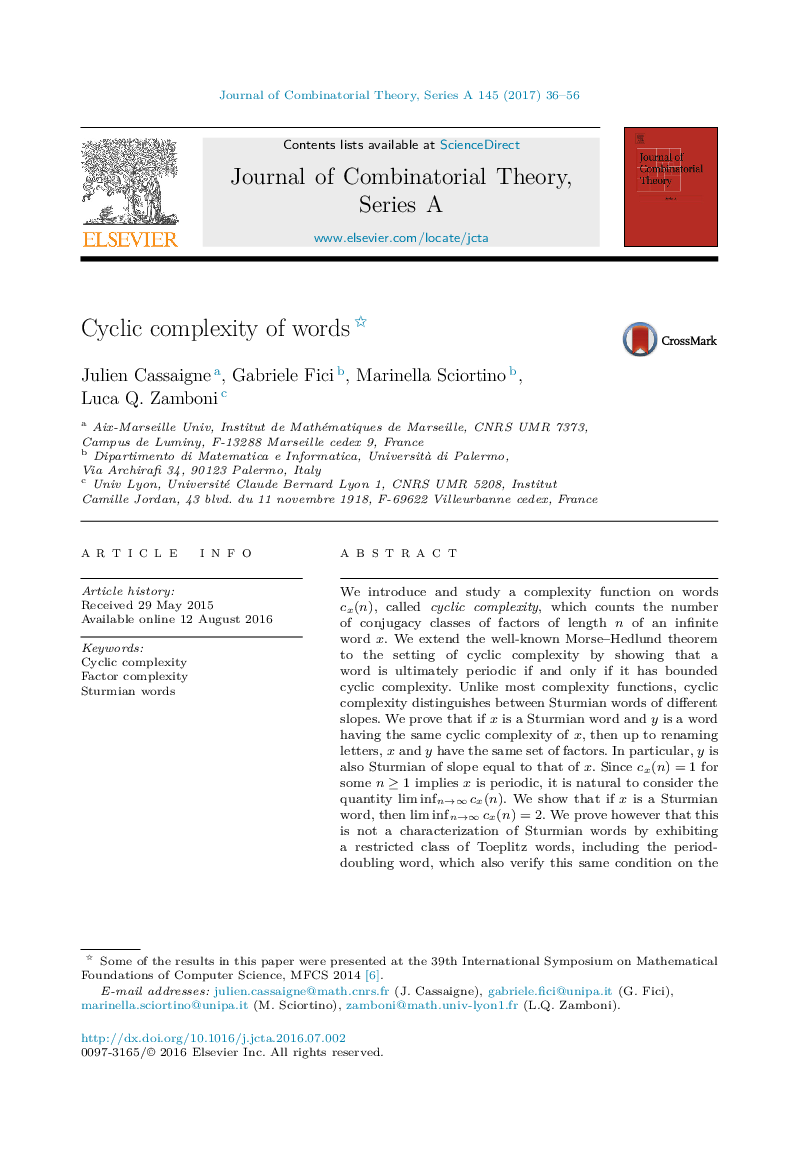| Article ID | Journal | Published Year | Pages | File Type |
|---|---|---|---|---|
| 4655025 | Journal of Combinatorial Theory, Series A | 2017 | 21 Pages |
We introduce and study a complexity function on words cx(n)cx(n), called cyclic complexity, which counts the number of conjugacy classes of factors of length n of an infinite word x. We extend the well-known Morse–Hedlund theorem to the setting of cyclic complexity by showing that a word is ultimately periodic if and only if it has bounded cyclic complexity. Unlike most complexity functions, cyclic complexity distinguishes between Sturmian words of different slopes. We prove that if x is a Sturmian word and y is a word having the same cyclic complexity of x, then up to renaming letters, x and y have the same set of factors. In particular, y is also Sturmian of slope equal to that of x . Since cx(n)=1cx(n)=1 for some n≥1n≥1 implies x is periodic, it is natural to consider the quantity liminfn→∞cx(n). We show that if x is a Sturmian word, then liminfn→∞cx(n)=2. We prove however that this is not a characterization of Sturmian words by exhibiting a restricted class of Toeplitz words, including the period-doubling word, which also verify this same condition on the limit infimum. In contrast we show that, for the Thue–Morse word t , liminfn→∞ct(n)=+∞.
